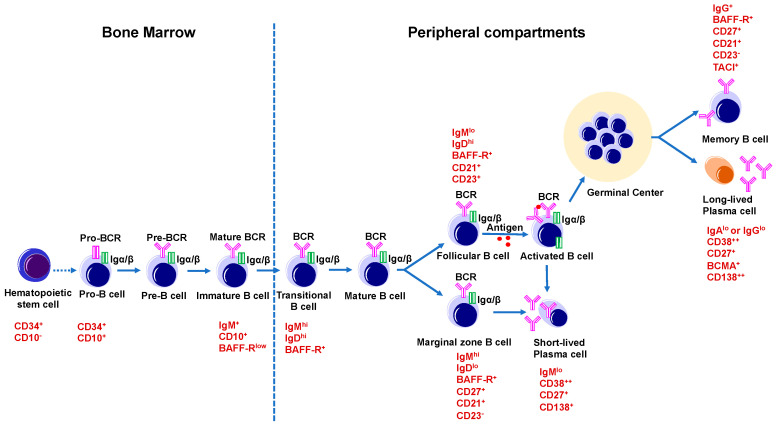Figure 2.
B cell development and maturation. B cells originate from hematopoietic stem cells in the bone marrow. Hematopoietic stem cell differentiates into common lymphoid progenitor cell, which give rise to a B lymphocyte progenitor that then differentiates into a Pro-B cell (CD34+CD10+), and a Pre-B cell, and then an immature B cell (IgM+CD10+BAFF-Rlow). In the spleen, immature B cells differentiate into naïve mature B cells. A small population of naïve mature B cells becomes marginal zone B cells (CD21+CD23−IgMhiIgDlo), whereas most of the naïve mature B cells develop into follicular B cells (CD21+CD23+IgMloIgDhi). Later marginal zone B cells transform into short-lived plasma cells (CD38++CD138+) and follicular B cells, when encountering an antigen, and become activated B cells. These activated B cells take part in GC reactions in the secondary lymphoid organs like spleen and lymph nodes where they differentiate into long-lived, antibody-secreting plasma cells (CD38++CD138++BCMA+), or memory B cells (IgG+BAFF-R+CD27+CD21+CD23−).

